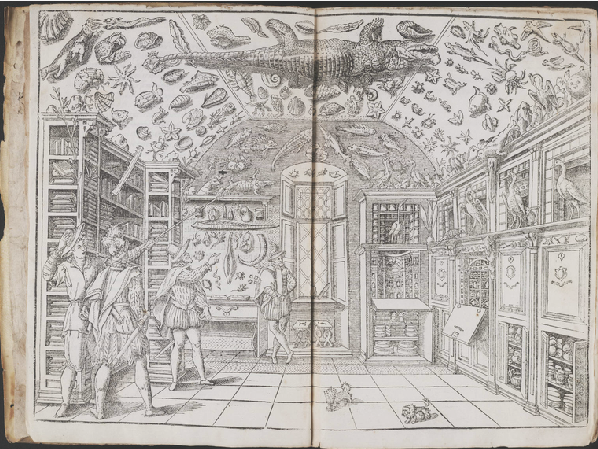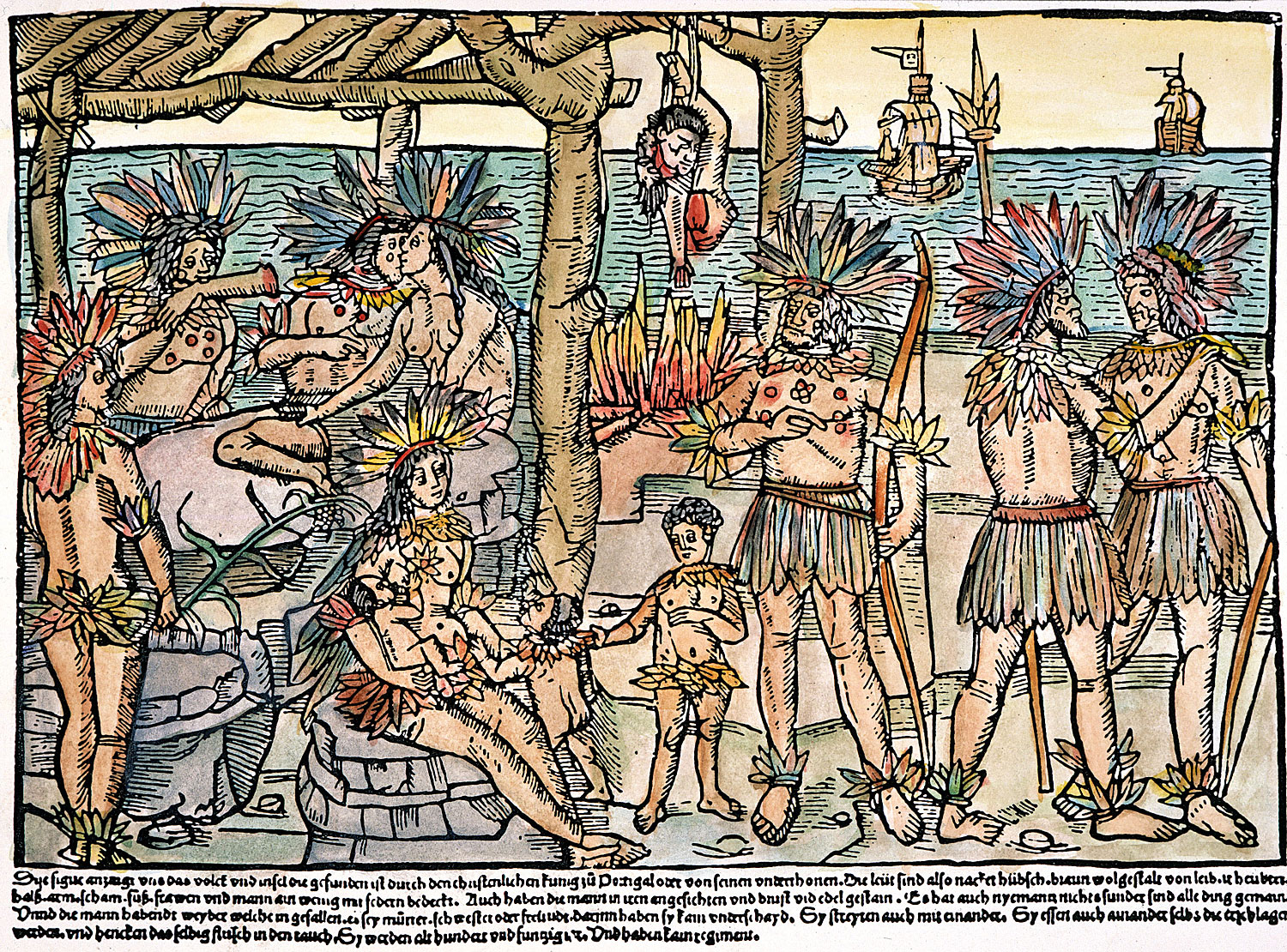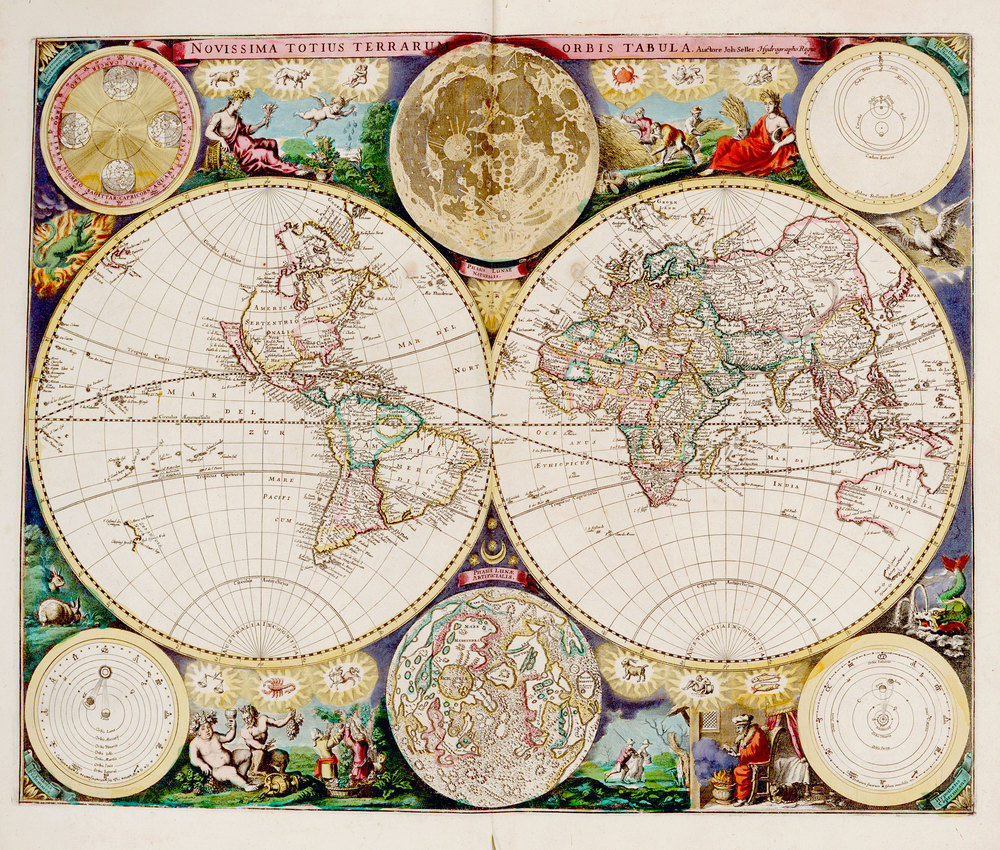By a combination of imported disease, steel, horses, good fortune, and a willingness to resort to brutal violence, the conquistadores took over the major empires of the Americas. Yet Spain realized that it could not exploit the abundant natural resources--like plants, precious metals, and human labor-- if it did not understand the New World as well as possible. Much of their effort in this regard was goal oriented: they wanted to learn where gold could be found and learn enough about indigenous peoples to make them mine the gold. They conducted territorial surveys and sent out empire-wide questionnaires (the relaciones geograficas) that collected cultural and ethnographic data on the various Indian groups. As imperial officials and entrepreneurs began to look closer at American nature and describe what they saw, they helped to create and legitimize a new manner of conducting science: empiricism.
Empiricism, the scientific method based on first hand observation and experimentation, had an immediate impact within the Spanish American colonies. To cite just a few examples: experiments were conducted to learn which crops worked best in various American climates, a process that reshaped American ecology and social systems by making cash-crop plantation slavery a profitable industry. Native herbal science combined with empirical testing to study and cultivate medicinal plants that treated various diseases (including malaria and syphilis) and could be exported for profit. Mining techniques, such as the use of mercury to extract silver, also fueled European greed by promising huge rewards from mineral deposits.
Despite traditional historiography which relegates Spain and Latin America to the margins in the development of modern science, recent research has shown that the experience of the Spanish American empire was critically intertwined with European experimental practice. Historian Antonio Barrera-Osorio argues, for example, that the necessity of hands-on knowledge to the New World venture influenced the path of the scientific revolution in Europe (Barrera-Osorio 2006).
Spanish naturalists like Gonzalo Fernandez de Oviedo began cataloging the thousands of new plants and animals they encountered in America with detailed descriptions, illustrations, and, when possible, live or preserved specimens. The seeds and botanical varieties would be cultivated and studied further in Spain's botanical gardens while preserved animals and ethnographic artifacts (like Indian clothes, weapons, and art) would be exhibited in Europe's new cabinets of curiosity, like Imperato's Museum. The direct observation of these imports was central to understanding American nature as well as catapulting European scientific methods into the modern era.
This new manner of doing science also facilitated Spain's ethnographic studies of the Indians they encountered and ruled over and created images of the New World that proved influential to Europeans and Americans alike (see the 1505 source on the Tupinamba Indians for an early example of this). Scholars like Bernardino de Sahagun, with the help of Indian intellectuals, learned indigenous languages and wrote much on their social and political practices, religious beliefs, science, medicine, and history that may otherwise have been lost. It is also significant that creole intellectuals living in the New World created one the earliest intellectual conceptions that Indians and Europeans were inherently distinct races. According to Jorge Canizares-Esguerra, creoles in parts of Latin America tried to oppose prevalent European notions of environmental determinism by claiming that although American stars and climate might cause degeneration among Indians, it was actually good for people of Spanish origin (Canizares-Esguerra 1999).
Empirical science proved to be an effective way to learn about the New World, and it was key to expanding and exploiting Spain's American empire. The fact that this scientific method quickly spread to the rest of Europe and proved foundational to the scientific revolution attests to its efficacy. Even today, empirical observation and experimentation remain the underlying premise of scientific practice.
Questions for further exploration:
- Look at the source "European Cosmographer." How does this image embody the contrast between scholarly knowledge and empirically derived knowledge?
- Consider the things on display in the image of Ole Worm's Museum and identify ethnographic artifacts and/or animal specimens that might be from the New World. How do you think that learned Europeans observing these materials would interpret them? Which knowledge systems informed their approach?
- Compare and contrast the three images in this topic's sources that depict American Indians. How had Europeans' perception of them changed and stayed the same between the early sixteenth century and the early seventeenth century?
- Empirical science was one of many important new scientific paradigms to develop in the fifteenth and sixteenth centuries. Does it tie-in to other scientific revolutions, like the Copernican revolution, or is it an independent phenomenon with a separate development?
- The sources "Eden in Peru" and "Sky chart with southern hemisphere" each explore some of the stranger manifestations of empirical science in the Spanish American colonies. What are some other examples of scientific practices in the New World that were aberrant from the standard narrative of "scientific progress" often associated with the scientific revolution? Feel free to explore other topics for examples.
Further Reading:
Barrera-Osorio, Antonio. Experiencing Nature: The Spanish American Empire and the Early Scientific Revolution. Austin: University of Texas Press, 2006.
Bleichmar, Daniela. Science in the Spanish and Portuguese Empires, 1500-1800. Stanford: Stanford University Press, 2009.
Canizares-Esguerra, Jorge. "New Worlds, New Stars: Patriotic Astrology and the Invention of Indian and Creole Bodies in Colonial Spanish America, 1600-1650." The American Historical Review. 104: 1 (February 1999): 33-68.
Gerbi, Antonello. Nature and the New World: From Christopher Columbus to Gonzalo Fernandez de Oviedo. Trans. Jeremy Moyle. Pittsburgh: University of Pittsburgh Press, 1985.
Pimentel, Juan. "The Iberian Vision: Science and Empire in the Framework of a Universal Monarchy, 1500-1800." Osiris, 2nd Series. 15, Nature and Empire: Science and the Colonial Enterprise (2000): 17-30.
Grafton, Anthony. New Worlds, Ancient Texts: The Power of tradition and the Shock of Discovery. Cambridge: The Belknap Press of Harvard University Press, 1992.







